When Dale Cottrell started building boats in the 1970s, he was working with fiberglass, not wood. At first he made fiberglass canoes, and then in 1984 he designed and built the Puffin Dinghy. He built a business around the Puffin and ultimately did quite well with it, selling thousands of them at a rate of 300 or more per year. But popping ’glass boats out of molds wasn’t where his heart was. He wanted to build wooden boats, and in 1994 he established Cottrell Boatbuilding in Searsport, Maine. He and his son Seth now build about a dozen small boats a year, rowing boats mostly, but a few for oar and sail. Their Tadpole Tender is a boat Dale designed and built for a customer looking for a boat that could be used to teach his kids to row. Drawn along the lines of a Whitehall, the 10′ Tadpole also proved to be popular as a tender.
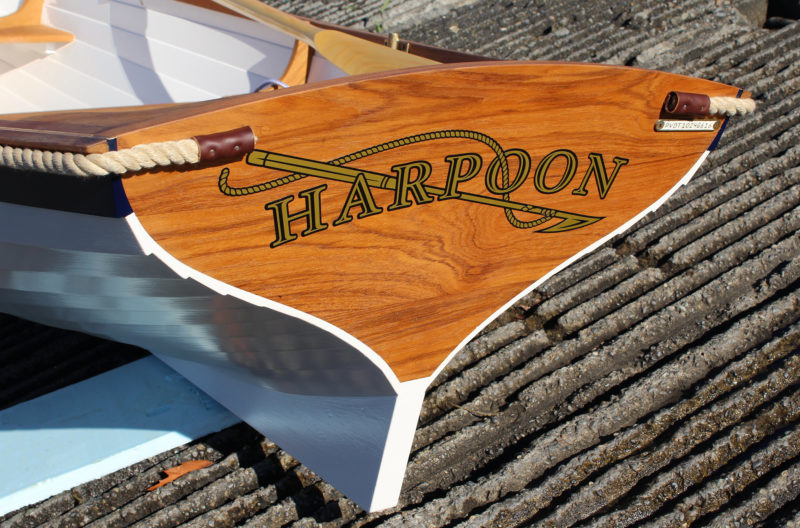 photographs by the author
photographs by the authorThe skeg does a good job keeping the Tadpole on track, eliminating the need to maintain course with the oars. The rope incorporated in the rub rail is one of several options for the gunwale guard.
The Tadpole is built in glued-lap plywood fashion with meranti marine plywood and epoxy. The 10 strakes are lined-off well, and the laps run fair from stem to stern. The hull is painted, making it easier to maintain and less stressful to use than a varnished hull.
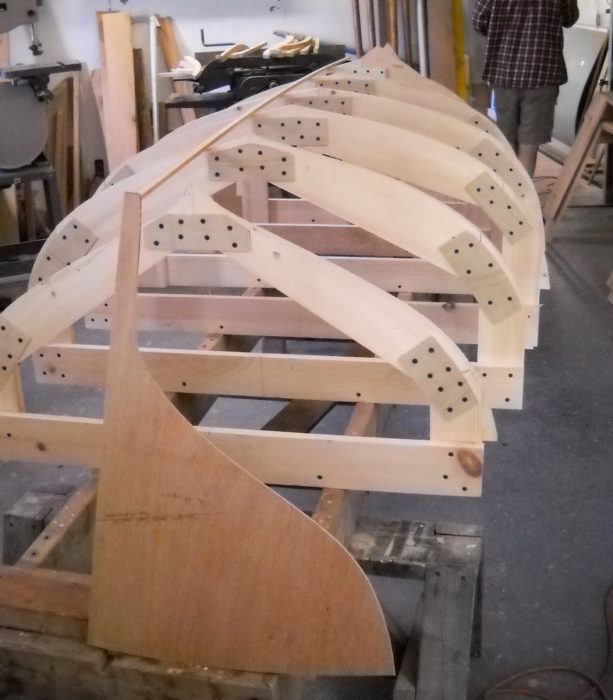 courtesy of Cottrell Boatbuilding
courtesy of Cottrell BoatbuildingThe molds for the Tadpole, set up here in the Cottrells’ shop, show the gentle curve of the full bilges that give the hull good load-carrying ability.
Wooden trim, thwarts, floorboards, and transom are of oak, mahogany, or teak. The gunwale can have a number of different treatments: a sheer guard of oak, mahogany, or teak, a canvas and rubber guard, or the traditional treatment on HARPOON, a 1″ rope set in a grooved outwale. The trim provides plenty of eye candy in the plywood construction, but if you’ve got your heart set on a traditionally built boat—copper-clenched cedar on steam-bent oak frames—and want to surround yourself with brightwork, the Cottrells will be happy to oblige.
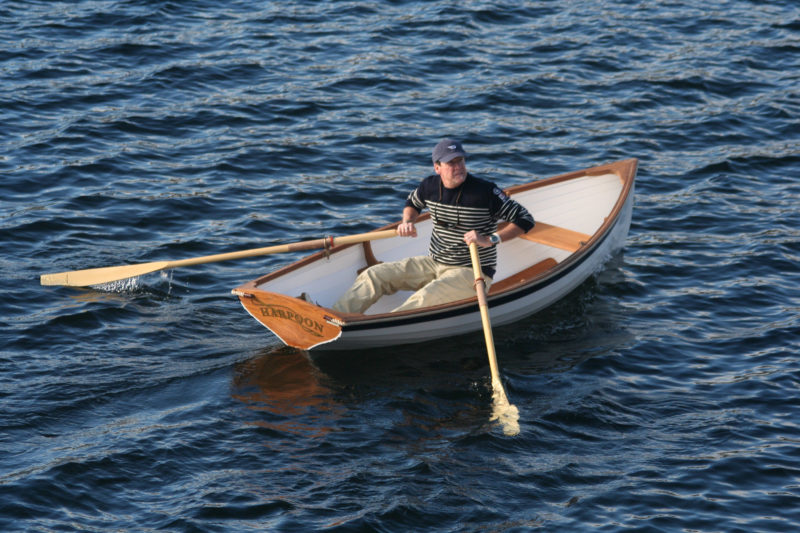
The Tadpole will easily maintain 3-3/4 knots without much effort at the oars. It tracks well and is very maneuverable.
I met up with Jeff Bowlby to spend some time rowing his Tadpole, HARPOON, on Seattle’s Lake Union. He had brought the boat in the back of his pickup truck, and it was quite easy for the two of us to lift the 90-lb boat and carry it down the launch ramp. The boat is also light enough for two to lift on a roof rack or even for a strong, determined solo rower to lift one end up on the back rack and then to slide it forward. With a beam of 45″ it wouldn’t need extra-long racks to accommodate it.
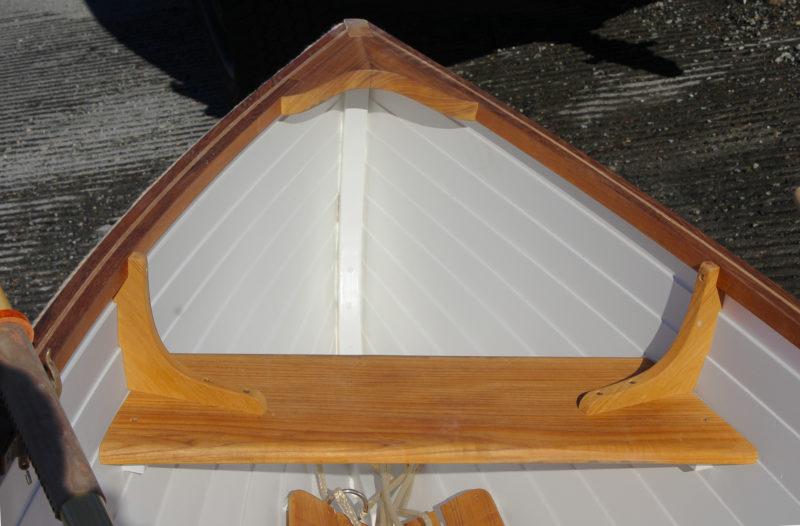
The contemporary glued-lap-plywood construction keeps the boat light and the interior easier to clean and maintain.
While Jeff parked the truck, I stepped aboard. The Tadpole, delivered with a pair of Shaw & Tenney spoon-blade oars, has two rowing stations equipped with bronze oarlocks. I took the bow position and rowed around while waiting for him to get aboard. With my weight so far forward, the stern rose up quite high, but there was enough fullness in the bow to keep me afloat and stable. When Jeff got settled into the stern sheets, the Tadpole trimmed well and still had plenty of freeboard. With the two of us aboard, the boat had respectable speed for a 10-footer. My GPS logged 3 knots at a relaxed pace, 4 knots at an exercise pace, and 4-1/4 knots when I was pulling as hard as I could.
After rowing around with Jeff, I dropped him off back at the ramp. The plan was to reunite HARPOON with her mothership, a 37′ Hinckley Picnic Boat. Jeff would drive to the marina where he kept that boat, and I’d row nearly 1-1/2 miles down the lake to meet him there. That’s not a daunting distance, but there’s plenty of room there to begin to loathe a rowing boat if it doesn’t get up and go. That wasn’t the case with the Tadpole. Its skeg did its job nicely and the boat tracked well; the hull carried its way without a lot of check between strokes and did a good job of maintaining trim as my weight shifted from catch to finish. The forward edge of the stern sheets served well as a stretcher, being just the right distance from the center thwart for my leg length (I’m 6′ tall) and high enough to catch me at the balls of my size-13 feet. The ergonomics worked out well for me to get a lot of power into the stroke, so I made good speed down the lake. I could have loped along at 3-3/4 knots, but I opted to make a quick run to the rendezvous and maintained 4-1/4 knots at my exercise pace.
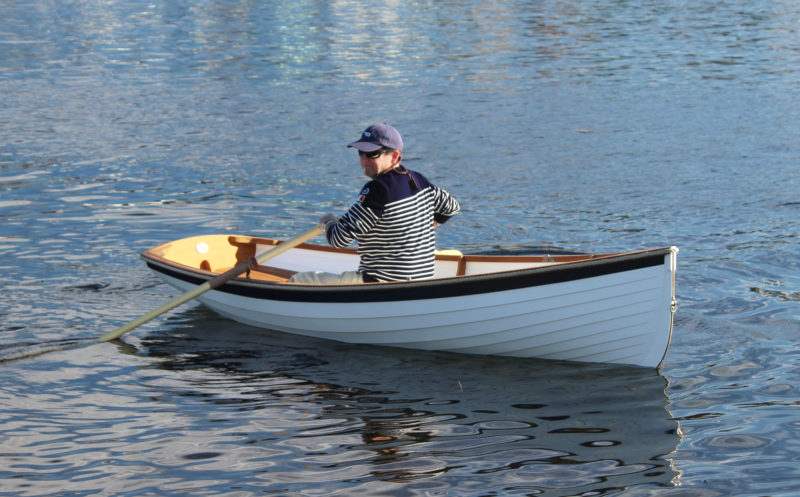
The Whitehall form is nicely expressed by the Tadpole, even though it is only 10′ long.
Jeff had told me he’d have his Hinckley out in front of the marina to wait for me, but when I arrived there was no sign of him. He may have overestimated how long it would take me to get to the marina. I went looking for him and circled the marina, spinning around to scoot stern first through some skinny passages and enjoying the quick maneuverability of the Tadpole. We eventually met up just off the entrance to the marina with Jeff idling the Hinckley’s twin diesels. The name on the transom was QUEEQUEG. That explained the name he had given the Tadpole as its tender. (Jeff had been a fan of Moby Dick from a young age.) I rowed up to the stern, and Jeff lowered the falls while I connected the two harnesses to the lifting eyes in HARPOON’s keel and the eyebolts that slip into the oarlock sockets. Rings at the intersection of the three lines of each harness take the hooks from the davits’ falls. QUEEQUEG is quite a handsome boat and HARPOON looked like it belonged at its stern. It just wouldn’t do to have a second-rate tender hanging from those davits. While the Tadpole spends most of its time there when QUEEQUEG is underway, Jeff reports that HARPOON also tows well.
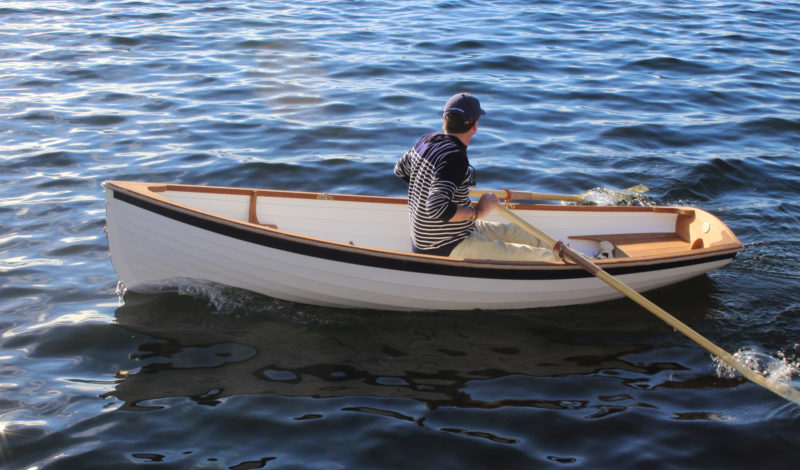
The forward edge of the stern sheets provides a sold foot brace for those with legs long enough to reach it.
As a boat designed to teach kids to row, the Tadpole should perform admirably. The boat is light and easily driven, stable enough to tolerate youthful horseplay, and well mannered whether going straight from point A to point B or following an aimless, meandering path. The Tadpole is a playful boat, so I’d suggest letting the kids play—they’ll figure out how to row in due time. They aren’t likely to have legs long enough to use the stern sheets to brace their feet, so it would be wise to install foot braces that are adjustable to suit each child and keep up with them as they grow. As a parent I was grateful for the times that my kids tired themselves out—a footbrace will quicken their becoming tired and docile. The glued-lap plywood construction is tough, so don’t sweat the scratches and the dings. Introducing kids to boating in boats such as the Tadpole that are pleasing to look at even to an untrained eye is, I think, a good way of fostering a love of boats and an appreciation for traditional forms.
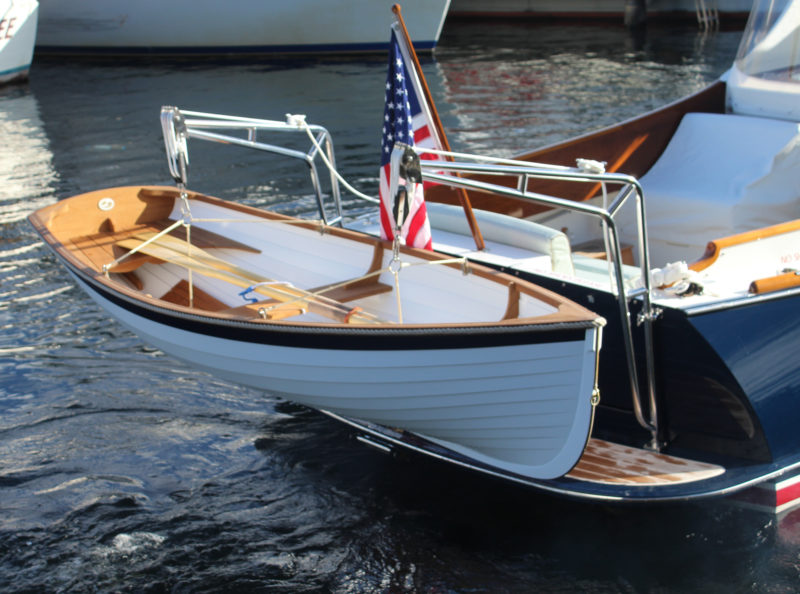
HARPOON was equipped with lifting eyes and harnesses to bring the boat up with davits. The light weight of the Tadpole makes it an easy lift.
The Tadpole will do yeoman’s duty as trainer for budding rowers and as a tender ferrying people and cargo, and it is as attractive as it is utilitarian; it deserves to hang from the davits of an elegant motoryacht.![]()
Christopher Cunningham is the editor of Small Boats Monthly.
Tadpole Tender Particulars
[table]
LOA /10′
Beam/45″
Weight/72 lbs
[/table]
Finished boats are available from Cottrell Boatbuilding starting at $8,496 depending upon trim: oak, mahogany, or teak. Floorboards are an available option. The Tadpole can also be built in 12′ and 15′ lengths as well as in traditional plank-on-frame construction. Plans are not available.
Is there a boat you’d like to know more about? Have you built one that you think other Small Boats Monthly readers would enjoy? Please email us!
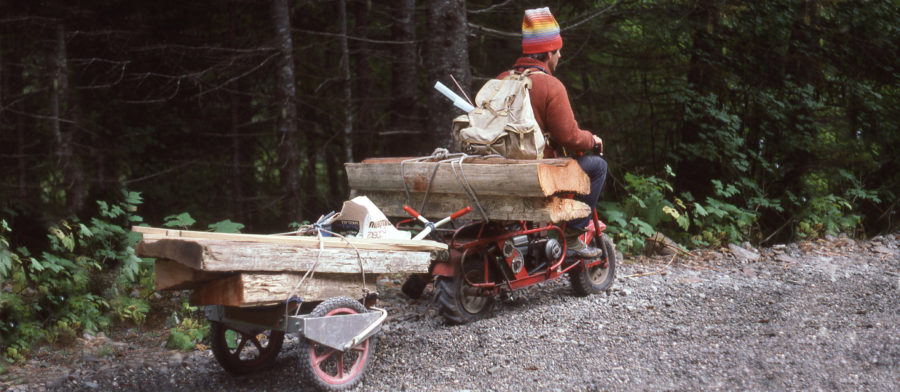
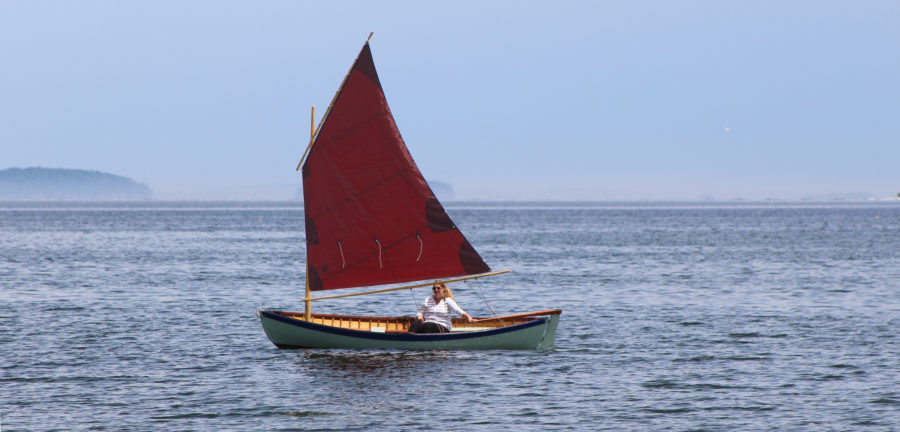
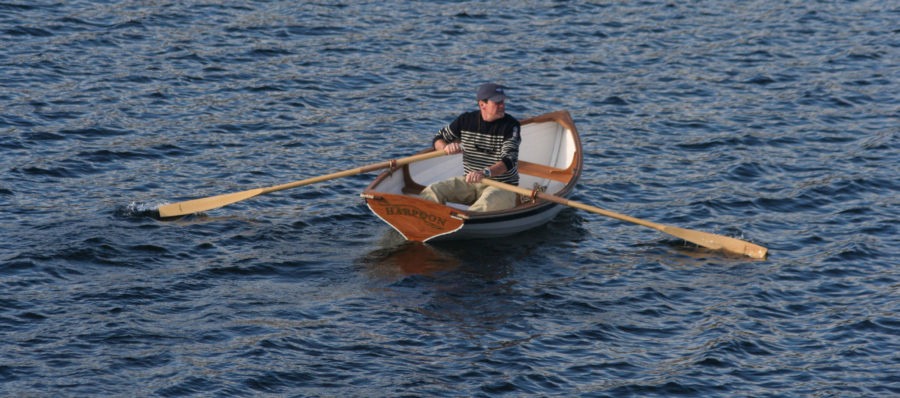
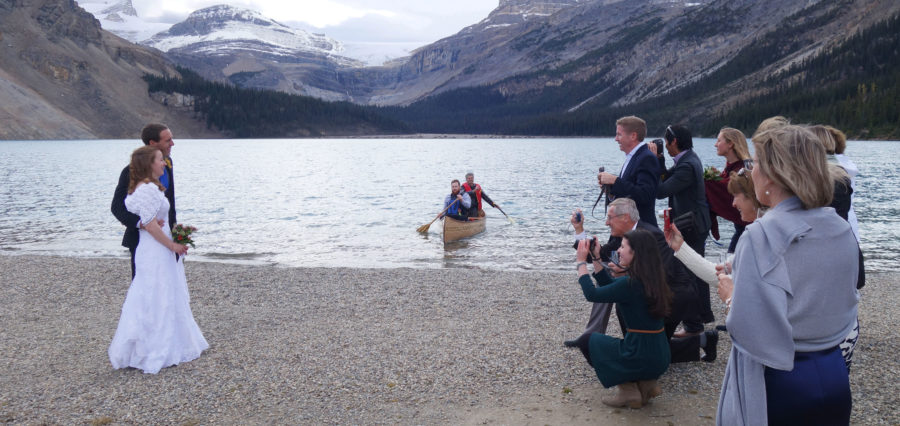
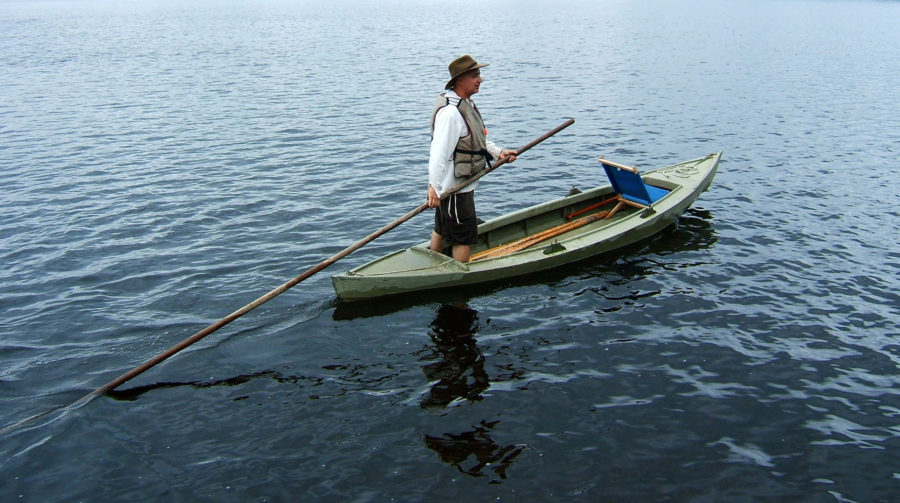
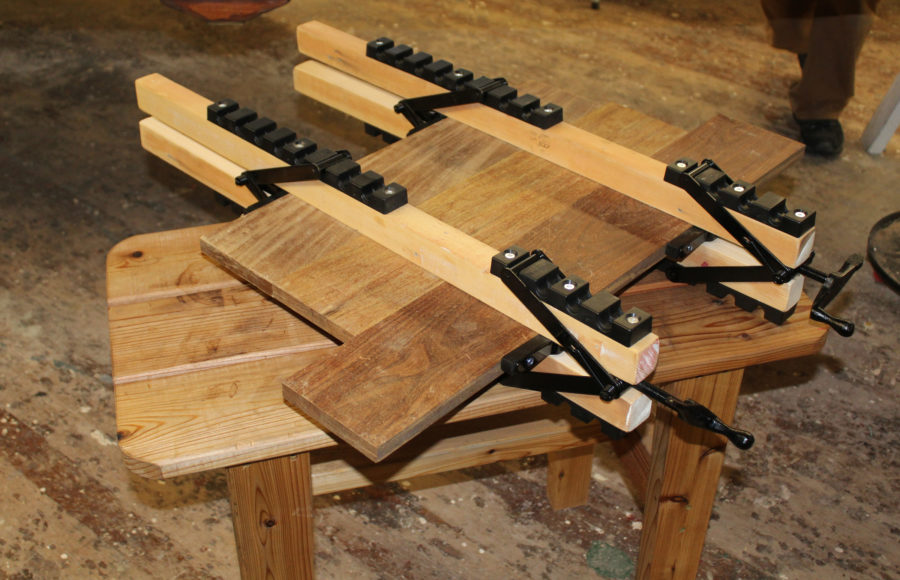
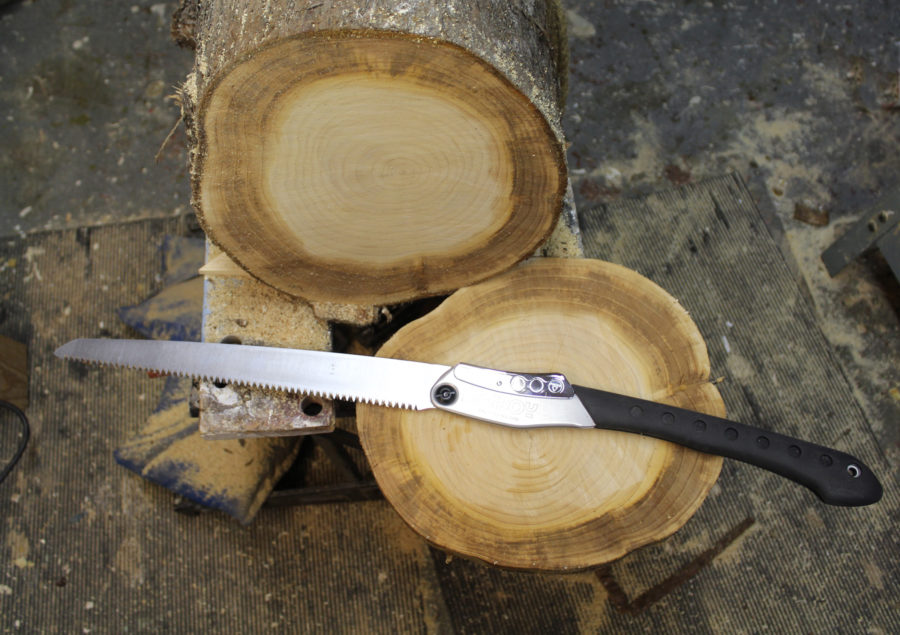
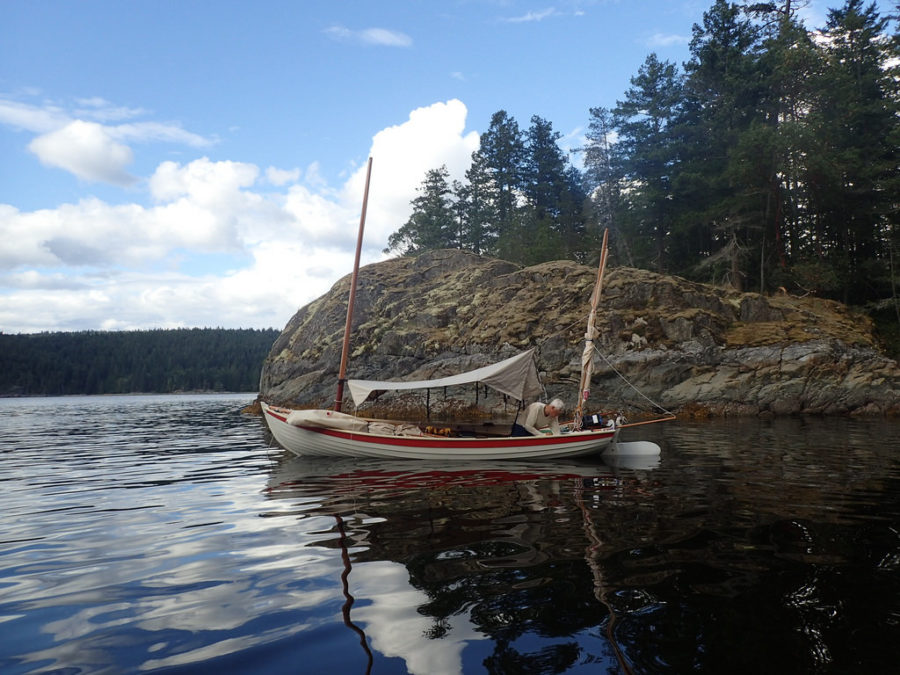
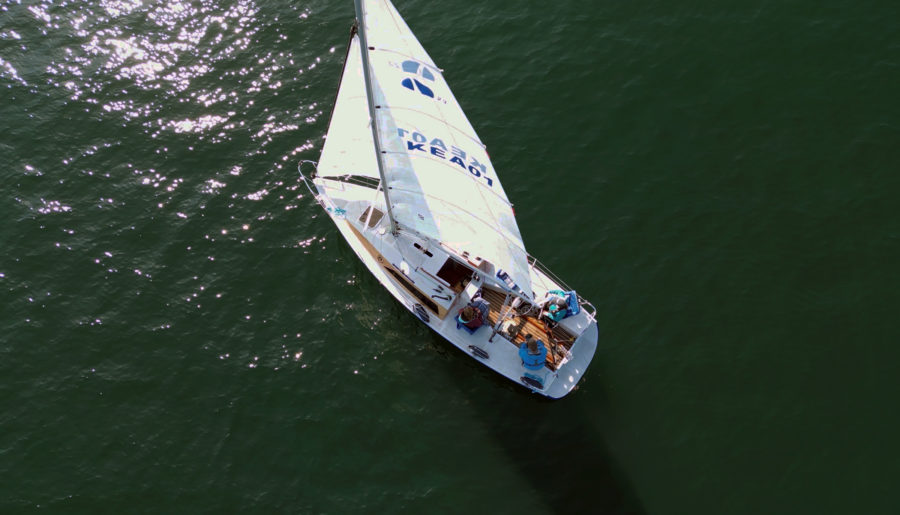
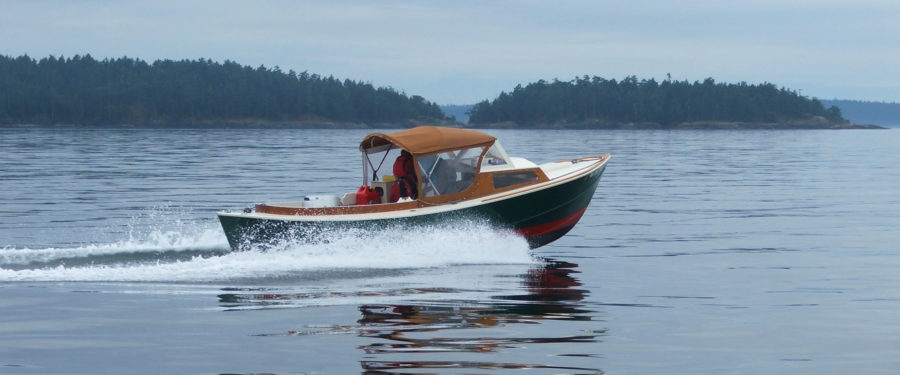

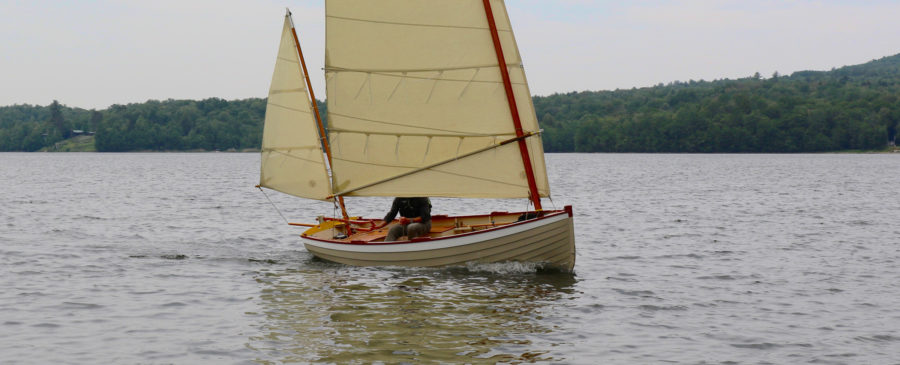
Beautiful, simple, clean.
Great article, especially for a 10′ rowing boat. I was always wondering about a smaller rowboat compared to my 14′ Seaford skiff.
What a shame this classic is not available as a kit. I would have bought one on the spot!